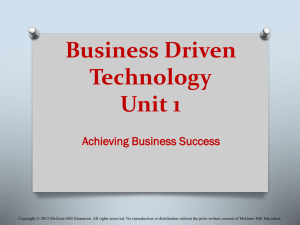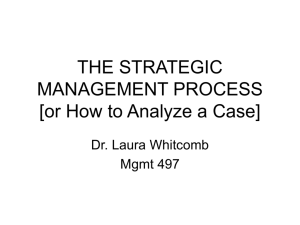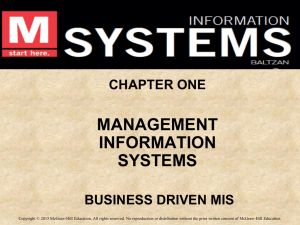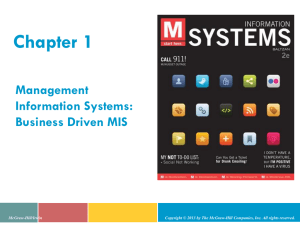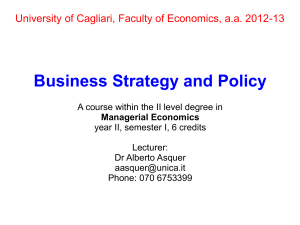File - Revealthought
advertisement
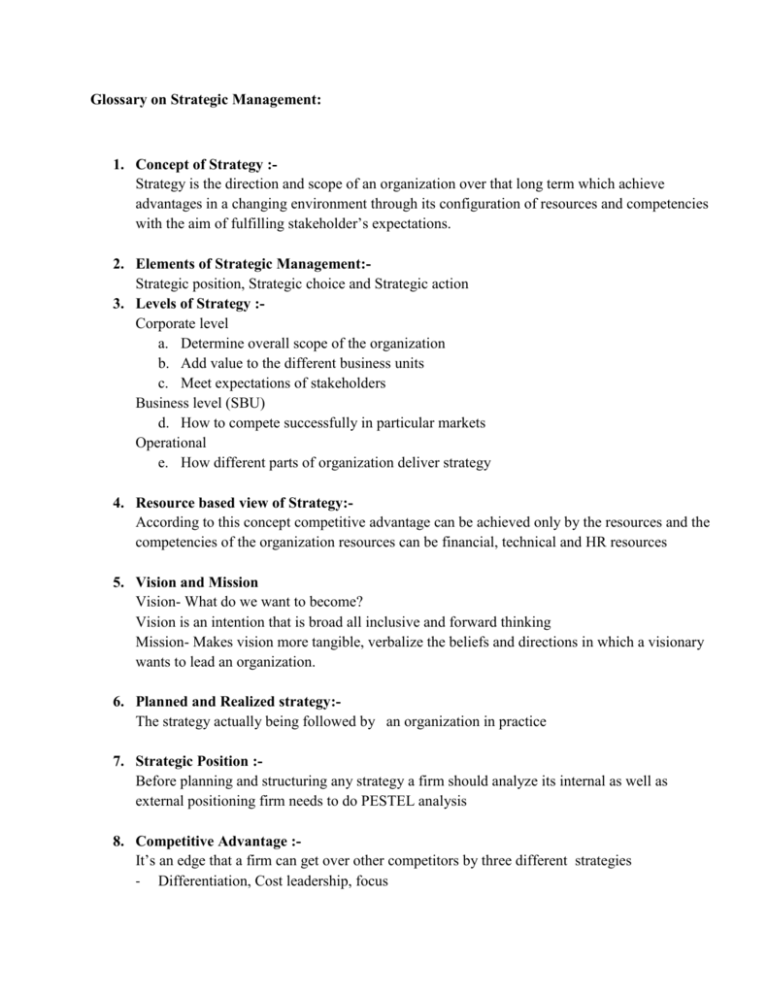
Glossary on Strategic Management: 1. Concept of Strategy :Strategy is the direction and scope of an organization over that long term which achieve advantages in a changing environment through its configuration of resources and competencies with the aim of fulfilling stakeholder’s expectations. 2. Elements of Strategic Management:Strategic position, Strategic choice and Strategic action 3. Levels of Strategy :Corporate level a. Determine overall scope of the organization b. Add value to the different business units c. Meet expectations of stakeholders Business level (SBU) d. How to compete successfully in particular markets Operational e. How different parts of organization deliver strategy 4. Resource based view of Strategy:According to this concept competitive advantage can be achieved only by the resources and the competencies of the organization resources can be financial, technical and HR resources 5. Vision and Mission Vision- What do we want to become? Vision is an intention that is broad all inclusive and forward thinking Mission- Makes vision more tangible, verbalize the beliefs and directions in which a visionary wants to lead an organization. 6. Planned and Realized strategy:The strategy actually being followed by an organization in practice 7. Strategic Position :Before planning and structuring any strategy a firm should analyze its internal as well as external positioning firm needs to do PESTEL analysis 8. Competitive Advantage :It’s an edge that a firm can get over other competitors by three different strategies - Differentiation, Cost leadership, focus 9. Core Competence :A specific practice or a quality that a firm attains for getting competitive advantage over its competitors 10. Competences :It is a unique practice or quality that a firm attains that can be initiated by other firms Attain that can be initiated by other firms. 11. Industry Structure 12. Five Forces Analysis :Competitive Rivalry is likely to be high when: • competitors are in balance • there is slow market growth (product life cycle) • there are high fixed costs in an industry • there are high exit barriers • markets are undifferentiated 13. PEST /PESTEL Analysis Political Economic Social Technological Environmental Legal 14. Ratio Analysis :This analysis exemplifies complexity of relationships among functional areas of the business 15. Concept of Value Chain :- 16. External Analysis:Looking outside the organization at two levels -General environment -The competitive advantage 17. Internal Analysis:Positive and negative for particular firm. Understanding strength and weakness 18. Competitive Rivalry :Competitive rivals are organisations with similar products and services aimed at the same customer group = direct competitors 19. Strategic Groups :Strategic groups are organizations within an industry with similar strategic characteristics following similar strategies are competing on similar bases Porters generic strategies: Porter's generic strategies describe how a company pursues competitive advantage across its chosen market scope. There are three generic strategies, either lower cost, differentiated, or focus. A company chooses to pursue one of two types of competitive advantage, either via lower costs than its competition or by differentiating itself along dimensions valued by customers to command a higher price. A company also chooses one of two types of scope, either focus (offering its products to selected segments of the market) or industry-wide, offering its product across many market segments. The generic strategy reflects the choices made regarding both the type of competitive advantage and the scope. The concept was described by Michael Porter in 1980’s. 20. Strategic Business Unit :SBU is a profit center which focuses on product offering and market segment. SBUs typically have a discrete marketing plan, analysis of competition, and marketing campaign, even though they may be part of a larger business entity. 21. Blue Ocean Strategy :When a firm starts a business with innovative and new ideas and where there is no competition in the market then this type of strategy is called Blue Ocean Strategy. Example, Telecommunication


